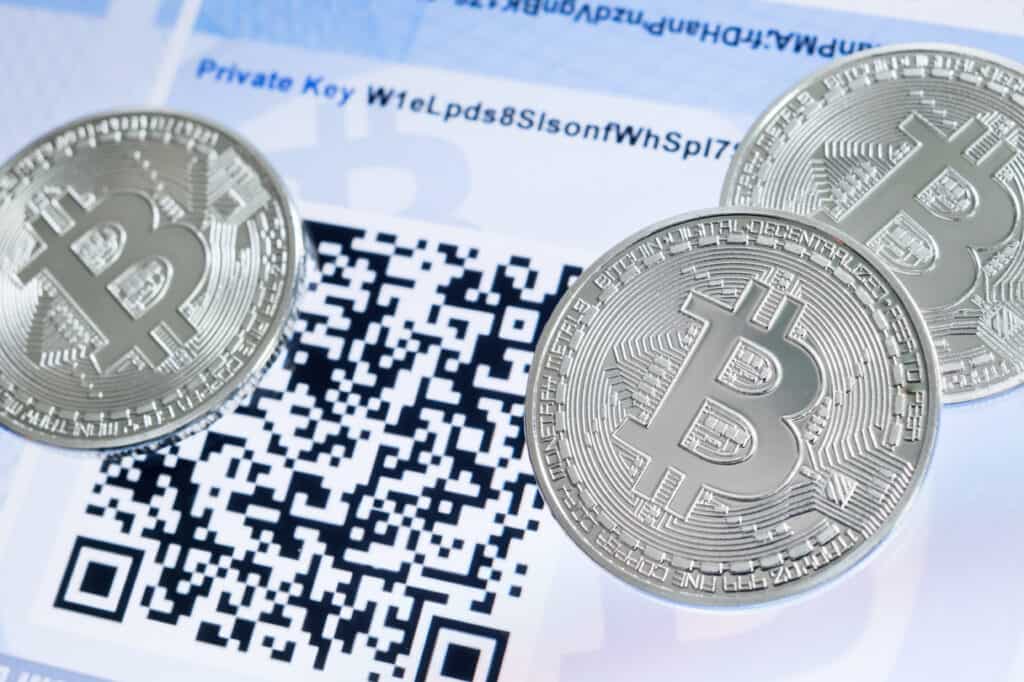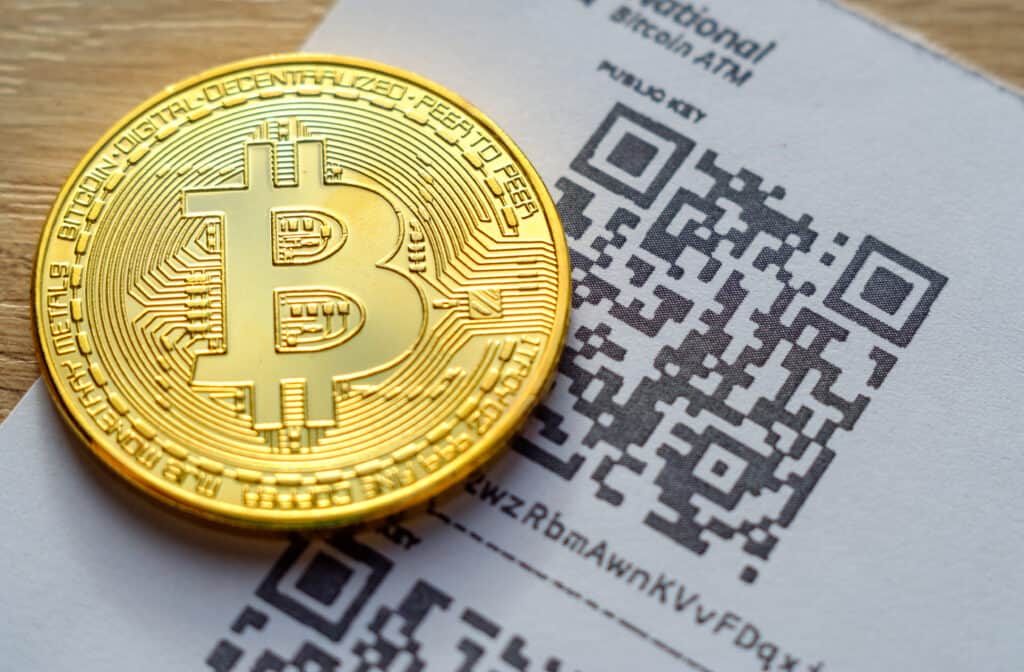Quick Answer:
Bitcoin, the first cryptocurrency, remains the most popular and desirable for investment, leading to the need for digital storage solutions. There are two main types of digital wallets for storing Bitcoin: software-based, which are online and convenient but less secure, and hardware-based, which are offline and more secure.
To check the balance on a Bitcoin paper wallet, use a blockchain explorer like Blockchain.info by entering the public key or scanning its QR code. This will reveal the transaction history and current BTC balance, also showing its value in fiat currency.
Paper wallets are considered the most secure cold storage method, storing public and private keys on paper without internet connectivity. However, they must be kept safe from physical damage and theft, as loss or damage can make the bitcoins inaccessible. Printing should be done using a secure, offline computer and printer to prevent exposure to malware.
For added security, paper wallets can be encrypted with a BIP38 passphrase. Funds can be transferred without exposing the private key by using software like Electrum Bitcoin Wallet. Despite being secure, paper wallets can be cumbersome to use, requiring physical access to the paper for transactions.
If a paper wallet is lost, the bitcoins cannot be recovered, so it’s crucial to store it securely. Paper wallets offer high security for Bitcoin storage, though they may be less convenient than hot wallets for quick access and transactions.
Bitcoin (BTC) definitely remains the most popular cryptocurrency on the market. Even though it’s the world’s first and oldest cryptocurrency, first introduced in 2009, it’s still the most desirable when it comes to investing. For instance, individuals and companies tend to diversify their financial portfolios by investing in Bitcoin.
Everyone who purchases Bitcoin assets needs to store them somewhere. Since we’re talking about cryptocurrency, this means digital storage solutions.
There are essentially two types of digital wallets. The wallet can either be software-based (like most wallets on crypto trading platforms), which requires a web connection for access, or it can be hardware-based, which exists offline. Both types are used to update the Bitcoin blockchain ledger when you receive or send assets.
But how to check balance on bitcoin paper wallet? Short answer: check bitcoin balance with public key. Or just follow these simple steps to lookup bitcoin wallet balance.
- Go to a blockchain explorer website like Blockchain.info.
- Enter the public key. You enter it manually or check paper wallet for the QR code and scan.
- The block explorer will find your wallet address that stores your whole transaction history, along with your BTC balance. You will also see your balance in fiat currency value like USD.
Keep reading to learn more about how to use paper wallet, should you choose to get one.

Types of Bitcoin Wallets
Hot Wallets
The first type is called a hot or online wallet. The word hot refers to the wallet’s internet connection, which makes it potentially vulnerable to external attacks and hacking attempts. This type of wallet generates something called a private key, which is necessary for you to access the assets.
The private key is a unique set of digits and letters and it’s used to sign and send transactions. A public key, on the other hand, is the personal address of the user’s wallet, and it’s used to receive payments from third parties.
While hot wallets are easy to use on computers and smartphones, the fact that they’re linked to the internet means they carry a potential security risk. This is why it’s better to use them temporarily for storing small amounts of cryptocurrency. This wallet type is useful for holding a few coins for quick access, but it isn’t a good choice for larger sums of money.
Beginners trying their hand at cryptocurrency may opt for web wallets as their main crypto wallets. Some wallets can store various altcoins like the famous dogecoin as well. Coinbase has one of the most popular web wallets.
Cold Wallets
A cold wallet is the exact opposite of a hot one. It isn’t connected to the internet, which means that the probability of it being compromised in any way is drastically lower. Moreover, your private key is also stored offline.
Users can check their assets on cold wallets through the software that is connected to their wallets.
This means that a cold wallet, such as one manufactured by Ledger in the form of a specialized USB device, can be accessed using compatible software like MEW. This makes them far more secure than hot wallets and an ideal choice for storing most of your Bitcoins. Trezor also has a great hardware wallet.
Paper Wallets
What is paper wallet? A paper wallet is the most secure type of cold storage for bitcoins. A paper wallet can be explained as a sort of wallet that doesn’t need a web connection because all the necessary user access data is stored on a piece of paper.
To put it simply, it’s a piece of paper on which you print both your public key and private key.
All it takes for you to carry out any desired transaction are these keys. With a smartphone capable of scanning QR codes, the funds are accessible anytime.
Different websites generate free paper wallet keys, such as Bitcoinpaperwallet.com and Bitcoin.com, most of which are open-source.

Are Paper Wallets Safe?
Storing bitcoins using a paper wallet is definitely safe. Since the wallet isn’t connected to the internet, the piece of paper you printed your public and private key on is the only way to your funds, which is why it’s imperative to keep this piece of paper in a secure place, and not to share its content with anyone.
If a malicious individual learns where you’re keeping your wallet and steals it, then the stored bitcoins will be compromised.
One drawback of paper wallets is that they can easily get damaged, so it’s important to keep the wallet safe from wear and tear or physical harm. For instance, if the printed QR code fades too much, the scanner might not recognize it. This means that the bitcoins stored in the wallet will become inaccessible, and you won’t be able to send your funds to another Bitcoin address.
When printing the paper wallet, you should make sure that the computer and printer you’re using are reliable and safe from any malware that might store or steal your keys. In fact, the safest way to do this is to have the computer and printer disconnected from the internet while printing your paper wallet.
Private Key Encryption
If you want another layer of security, you can encrypt your paper wallet by adding a BIP38 passphrase for the keys. When it comes to Bitcoin transactions, you can use Bitcoin Core to check which blockchain is valid when transferring funds.
Electrum
There is also a way to transfer funds from your paper wallet without exposing your private key, which gives you yet another layer of security. You have to use Electrum Bitcoin Wallet together with your paper wallet.

Check Wallet Balance of Your Bitcoin Paper Wallet
Now, let’s take a look at how to check wallet balance of your paper wallet. For starters, you’ll need a computer or a smartphone. The remaining steps are as follows:
- First, you need to go to a blockchain explorer website, such as Blockchain.info, and enter your public key. Blockchain explorer sites are used as paper wallet checkers. You can enter the key manually, or you can scan the QR code of the public key.
- The block explorer will find the public address that stores your whole transaction history, along with your BTC balance. You will also see your balance in fiat currency value.
- After checking your paper wallet balance, if you want to spend some of your assets, you need to use your private key. To transfer BTC to another Bitcoin address, you need to enter the private key manually or scan the QR code, just like you did with the public key.
In recent years, creating Bitcoin cash paper wallets and checking their current balance has become even easier. While in the past, you had to use a computer to check crypto wallet balance, nowadays, every Android or iOS smartphone can scan the QR codes of the public and private keys, similar to a regular mobile wallet.

Frequently Asked Questions
How to make a crypto paper wallet?
Paper wallets can be created using the official Bitcoin Core software, which will generate a new address each time it is run. The private key required to access funds is printed onto a piece of paper and kept separately from the public-facing addresses used for sending coins.
What if you lost bitcoin paper wallet?
If you lose your Bitcoin Paper Wallet, it will be impossible for you to access it again. So make sure you save them safely!
A Few Words Before You Go…
Have you now learned how to check Bitcoin wallet balance in your paper wallet?
Paper wallets have been criticized for being complicated to check crypto wallet balance, or transferring assets requires the physical presence of the paper on which the codes are stored.
Checking your balance on hot wallets may be faster and more practical, but the security that paper wallets offer in keeping your BTC safe makes them worth it.

